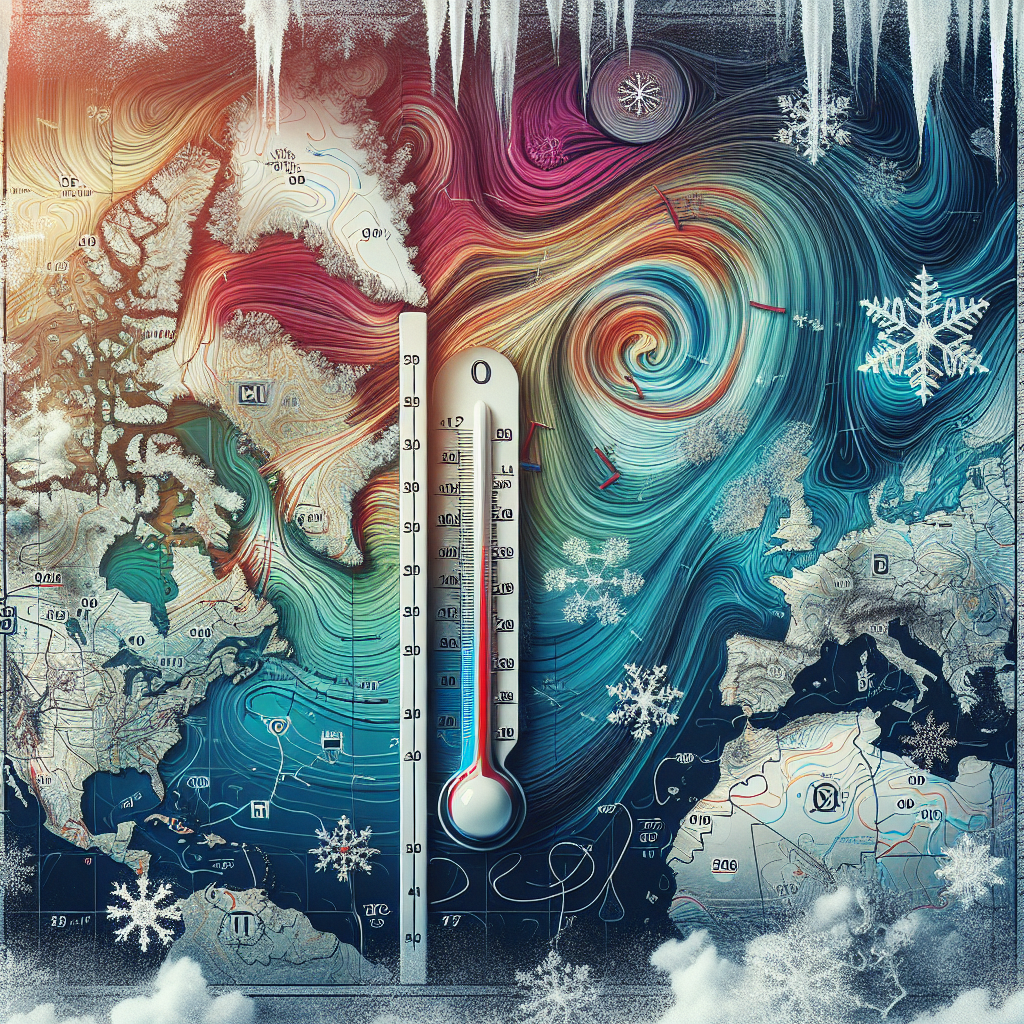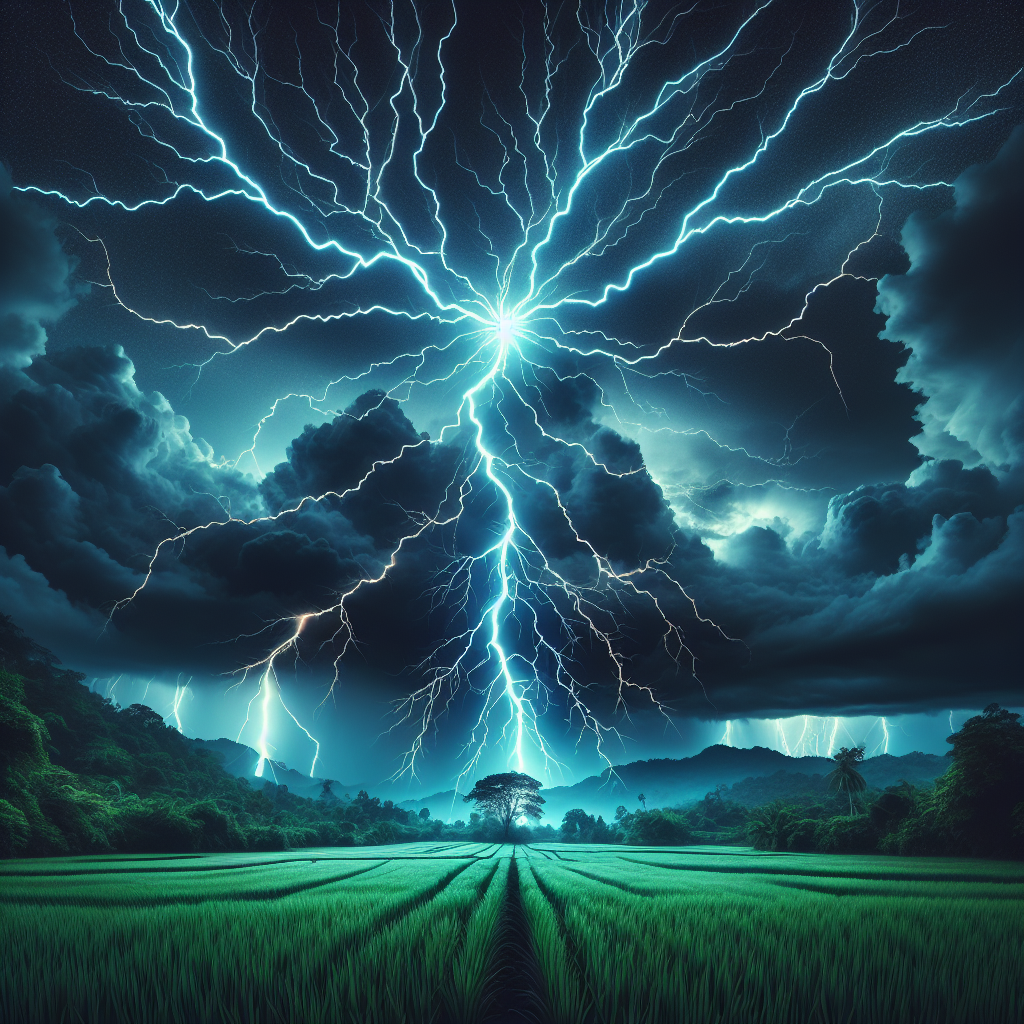Understanding Thunderstorms
Thunderstorms are among nature’s most awe-inspiring phenomena, marked by dramatic displays of lightning, powerful winds, and torrential rain. These storms occur when warm, moist air rises, cools, and condenses into precipitation, creating the atmospheric conditions necessary for thunder and lightning. To better understand thunderstorms, it’s crucial to explore their formation, components, and the science behind lightning and thunder.
How Thunderstorms Form
Thunderstorms typically form in three distinct stages: the cumulus stage, the mature stage, and the dissipating stage.
Cumulus Stage: This initial stage begins when warm, humid air rises in an unstable atmosphere. As this air ascends, it cools and condenses into water droplets, forming cumulus clouds. The process releases latent heat, which further fuels the upward motion of surrounding air.
Mature Stage: The mature stage is characterized by the most intense activity. The rising air continues to cool and condense, leading to the development of towering cumulonimbus clouds, which can reach heights of up to 12 miles. In this stage, both updrafts and downdrafts can coexist, giving rise to heavy rainfall, strong winds, and hail. The combination of these elements can lead to severe weather events, including thunderstorms.
Dissipating Stage: As the storm runs its course, the downdrafts begin to dominate, cutting off the storm’s supply of warm air. Rainfall decreases, clouds dissipate, and the storm gradually diminishes.
Types of Thunderstorms
Not all thunderstorms are created equal. They can be categorized into several types, each with unique characteristics.
Single-cell Thunderstorms: These are small, short-lived storms typically lasting less than an hour. They are characterized by weak updrafts and downdrafts and usually produce minimal rainfall and occasional lightning.
Multi-cell Thunderstorms: Formed by clusters of thunderstorms, multi-cell systems are more organized and can produce severe weather, including heavy rain and hail.
Supercell Thunderstorms: Marked by a rotating updraft, supercells are the most severe type of thunderstorms. They can spawn tornadoes, large hail, and damaging winds. Supercells can last for hours due to their unique structure.
The Components of Thunderstorms
A thunderstorm comprises several essential components that contribute to its intensity and duration.
Updrafts and Downdrafts: Updrafts are the rising currents of warm air that fuel the storm, while downdrafts are descending cool air that can lead to heavy rainfall and gusty winds.
Mesocyclones: These are rotating updrafts found in supercell thunderstorms. They can extend for several miles and are responsible for the development of tornadoes.
Lightning and Thunder: Lightning is a discharge of electricity that occurs within a thunderstorm, while thunder is the sound produced by the rapid expansion of heated air surrounding the lightning bolt.
Precipitation: Rain, hail, sleet, or snow can occur as a result of condensation within the storm cloud. The type of precipitation is largely determined by the temperature in the atmosphere.
The Science of Lightning
Lightning is one of the most recognizable features of thunderstorms. It forms as a result of electrical charges building up within clouds. This process starts with the collision of particles within the cloud, generating positive and negative charges. When the electrical potential becomes significant enough, a discharge occurs in the form of lightning.
There are different types of lightning:
Cloud-to-Ground Lightning: The most dangerous type, it occurs when a discharge travels between the cloud and the Earth’s surface.
Intra-cloud Lightning: This occurs within a single cloud, usually between positively charged regions at the top and negatively charged regions at the bottom.
Cloud-to-Cloud Lightning: A discharge that occurs between two separate clouds.
The temperature of lightning can reach an astonishing 30,000°F, making it five times hotter than the sun’s surface.
The Sound of Thunder
While most people are familiar with the sight of lightning, not everyone understands the science behind thunder. Thunder is the acoustic shockwave produced by the rapid expansion of air that surrounds a lightning bolt.
Because sound travels slower than light, we often see lightning before we hear the corresponding thunder. The time it takes for the sound to reach us can be used to estimate the distance of the storm. A general rule of thumb is that for every five seconds between seeing lightning and hearing thunder, the storm is approximately one mile away.
Risks Associated with Thunderstorms
Thunderstorms can pose significant risks, ranging from flash floods to tornadoes. Understanding these risks is vital for safety during stormy weather.
Flash Flooding: Heavy rainfall can overwhelm drainage systems and lead to sudden and severe flooding. Flash floods are particularly dangerous because they can occur quickly and with little warning.
Tornadoes: These violently rotating columns of air can develop from severe thunderstorms and pose significant threats to life and property.
Damaging Winds: Straight-line winds produced by downdrafts can cause extensive damage, uprooting trees, and damaging structures.
Hail: Hailstones formed in the strong updrafts of a thunderstorm can cause significant damage to vehicles, crops, and infrastructure.
Monitoring and Predicting Thunderstorms
Meteorologists utilize a variety of tools and techniques to track and predict thunderstorms. Doppler radar is an essential instrument, allowing scientists to observe precipitation, wind patterns, and storm rotation. This technology provides real-time data, enabling more accurate forecasting of severe weather events.
Additionally, weather satellites monitor cloud formations and temperatures, assisting in the early detection of potential thunderstorm development.
Lightning Safety
When thunderstorms are in the forecast, it’s essential to take precautions. The following safety tips can help minimize risks associated with thunderstorms:
Seek Shelter: Move indoors at the first sign of a thunderstorm. Avoid using electrical appliances.
Stay Away from Windows: High winds can break windows or cause debris to enter your home.
Avoid Water: Do not swim or bathe during a storm, as water conducts electricity.
Wait for All Clear: Wait at least 30 minutes after the last clap of thunder before leaving your safe location.
Conclusion
Understanding the complexities of thunderstorms deepens our appreciation for these natural events and emphasizes the importance of weather safety. By exploring their formation, the science behind lightning and thunder, and their potential risks, individuals can be better prepared for their occurrence. The mysteries of thunderstorms continue to intrigue researchers and enthusiasts alike, reminding us of the power and beauty of nature.










